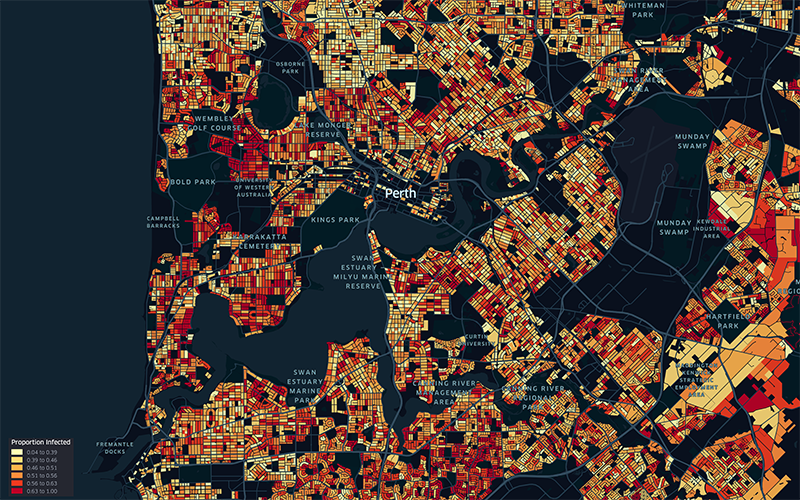Search
Research
Emulator-based Bayesian optimization for efficient multi-objective calibration of an individual-based model of malariaIndividual-based models have become important tools in the global battle against infectious diseases, yet model complexity can make calibration to biological and epidemiological data challenging. We propose using a Bayesian optimization framework employing Gaussian process or machine learning emulator functions to calibrate a complex malaria transmission simulator.
Research
WALLABY pre-pilot survey: Two dark clouds in the vicinity of NGC 1395We present the Australian Square Kilometre Array Pathfinder (ASKAP) WALLABY pre-pilot observations of two 'dark' H i sources (with H i masses of a few times 108 {M}_\odot and no known stellar counterpart) that reside within 363 kpc of NGC 1395, the most massive early-type galaxy in the Eridanus group of galaxies.
Research
Seroprevalence and associated risk factors of chikungunya, dengue, and Zika in eight districts in TanzaniaThis study was conducted to determine the seroprevalence and risk factors of chikungunya (CHIKV), dengue (DENV), and Zika (ZIKV) viruses in Tanzania.
Research
Mapping the endemicity and seasonality of clinical malaria for intervention targeting in Haiti using routine case dataTowards the goal of malaria elimination on Hispaniola, the National Malaria Control Program of Haiti and its international partner organisations are conducting a campaign of interventions targeted to high-risk communities prioritised through evidence-based planning. Here we present a key piece of this planning: an up-to-date, fine-scale endemicity map and seasonality profile for Haiti informed by monthly case counts.
Research
Reconstructing the early global dynamics of under-ascertained COVID-19 cases and infectionsAsymptomatic or subclinical SARS-CoV-2 infections are often unreported, which means that confirmed case counts may not accurately reflect underlying epidemic dynamics. Understanding the level of ascertainment (the ratio of confirmed symptomatic cases to the true number of symptomatic individuals) and undetected epidemic progression is crucial to informing COVID-19 response planning, including the introduction and relaxation of control measures.
Research
Malaria treatment for prevention: a modelling study of the impact of routine case management on malaria prevalence and burdenTesting and treating symptomatic malaria cases is crucial for case management, but it may also prevent future illness by reducing mean infection duration. Measuring the impact of effective treatment on burden and transmission via field studies or routine surveillance systems is difficult and potentially unethical. This project uses mathematical modeling to explore how increasing treatment of symptomatic cases impacts malaria prevalence and incidence.
Research
A Maximum Entropy Model of the Distribution of Dengue Serotype in MexicoPathogen strain diversity is an important driver of the trajectory of epidemics. The role of bioclimatic factors on the spatial distribution of dengue virus serotypes has, however, not been previously studied. Hence, we developed municipality-scale environmental suitability maps for the four dengue virus serotypes using maximum entropy modeling.

Research
Comodity forecastingProject description This project support the development of 10-year global forecasts of nets, insecticides, diagnostics, and treatments for malaria

News & Events
Sophisticated new modelling suggests keeping mask mandate could prevent 147,000 COVID-19 casesWA’s current Omicron COVID-19 outbreak could jump by 147,000 cases if mask mandates are abandoned before the Easter long weekend, according to sophisticated new modelling.
